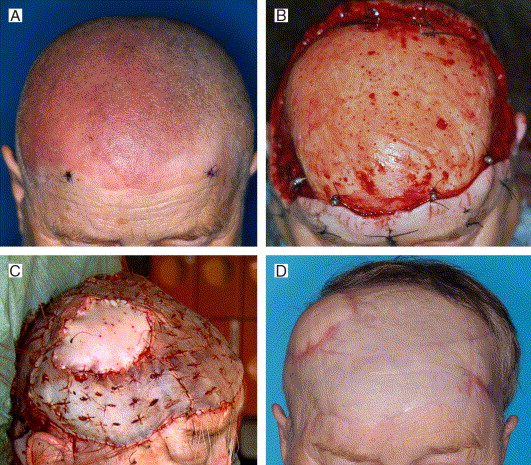
What is Forehead and Scalp Reconstruction?
Forehead and scalp reconstruction is a surgical procedure aimed at restoring the form and function of the forehead and scalp. It involves repairing defects, deformities, or injuries affecting the forehead and scalp, which can result from trauma, cancer removal, congenital anomalies, or previous surgery. Forehead and scalp reconstruction aims to improve scalp coverage, hairline aesthetics, and overall facial appearance.
How is Forehead and Scalp Reconstruction performed?
Forehead and scalp reconstruction may involve various surgical techniques depending on the specific condition being treated. Common procedures include local tissue rearrangement, skin grafting, tissue expansion, or microsurgical techniques. The goal is to restore scalp coverage, hairline symmetry, and facial aesthetics while preserving or restoring sensation and hair growth.
Who is a candidate for Forehead and Scalp Reconstruction?
Individuals who have defects, deformities, or injuries affecting the forehead and scalp, whether acquired or congenital, may be candidates for forehead and scalp reconstruction. Common indications for reconstruction include scalp defects resulting from trauma, cancer removal, congenital anomalies, or previous surgery that impairs scalp coverage, hairline aesthetics, or overall facial appearance.
What are the benefits of Forehead and Scalp Reconstruction?
Forehead and scalp reconstruction offer numerous benefits for individuals seeking to restore normal scalp coverage and improve facial aesthetics. Proper reconstruction can help improve hairline symmetry, restore scalp contour, and enhance overall facial appearance. By addressing scalp defects or deformities, individuals can achieve improved scalp coverage and quality of life.
What is the recovery process like after Forehead and Scalp Reconstruction?
Recovery from forehead and scalp reconstruction can vary depending on the extent and complexity of the procedure performed, as well as individual healing factors. Patients may experience swelling, discomfort, and temporary changes in scalp sensation following surgery, which typically improve over time. It's essential to follow post-operative instructions provided by the surgeon, including wound care, hair care, and activity restrictions to optimize healing and prevent complications.
What are the risks and complications associated with Forehead and Scalp Reconstruction?
Like any surgical procedure, forehead and scalp reconstruction carry certain risks and complications. These may include infection, bleeding, wound dehiscence (opening), poor wound healing, impaired sensation, hair loss, or unsatisfactory aesthetic outcomes. Additionally, individuals with complex defects or associated medical conditions may be at increased risk for complications.
Why choose VMG Hospital for Forehead and Scalp Reconstruction?
VMG Hospital in Hisar, Haryana, is a trusted provider of comprehensive care and treatment for individuals with scalp defects or deformities. Our team of skilled plastic and reconstructive surgeons has extensive experience in performing forehead and scalp reconstruction procedures, ensuring safe and satisfactory outcomes for our patients. With state-of-the-art facilities and a patient-centered approach, VMG Hospital is committed to delivering compassionate care and helping patients achieve optimal scalp coverage and facial aesthetics.